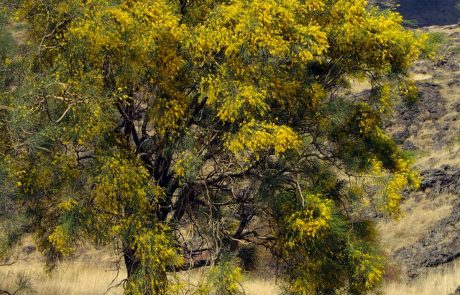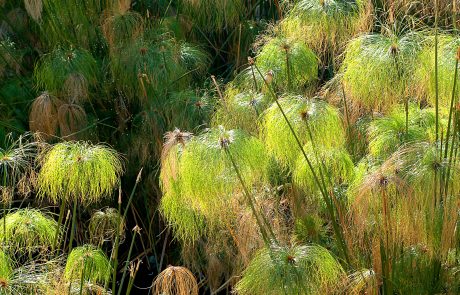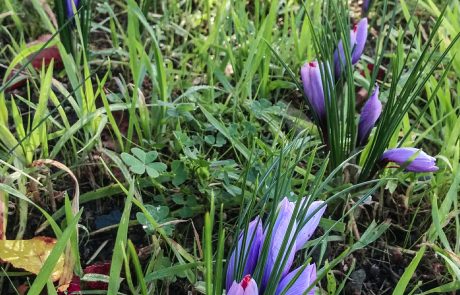BOTANICAL SICILY APPEALS TO EVERYONE
Dettaglio
Botanical gardens, parks and natural reserves. Sicily offers endless opportunities for adults and children to discover the beauties of nature.
BOTANICAL GARDENS
There are several botanical gardens in Sicily. Among the most important is the Botanical Garden of Palermo, with over two hundred years of activity, it is one of the major Italian academic institutions. Others include the Pietro Castelli Botanical Garden in Messina, a small green lung in the city. The Nuova Gussonea Botanical Garden on Mount Etna has a miniaturised volcano landscape. The Agrigento Botanical Garden is close to the Valley of the Temples with archaeological treasures including natural caves that can be explored and fossil finds. The Paternò del Toscano Park Here you can enjoy a picnic under the oaks in the woods and have breakfast or snacks in the park.
THE PAPYRUS
The Pharaohs, the Pyramids, the souls sailing the quiet Nile waters: ancient Egyptian history has always fascinated everyone, not just children. In the River Ciane natural reserve, close to Syracuse, it is possible to take a tour through an oasis where papyrus grows and discover the secrets of the craftsmen who still process this plant today.
A GIANT TULIP FIELD
You don’t need to go to Holland to to get a souvenir picture in a magnificent tulip field. There are fabulous tulip blossom displays in Sicily too.
From March to May, in Blufi, on the Madonie Mountains, in front of the Sanctuary of the Madonna dell’Olio there is a spectacular display of tulips with the snow-clad Mount Etna in the background. Thousands of red tulips grow wild in a wheat field, among almond and olive trees. Wild tulips are not picked but make an inviting attraction for photography enthusiasts.
LIVING FOSSILS: THE PETAGNA AND THE ZELKOVA
In the Nebrodi Mountains, it is possible to see the Petagna, a dinosaur plant. This living fossil dates back to the Tertiary period (30 million years), and what makes it so unique is it has a female flower to which three or four male flowers are attached. It grows near the Catafurco waterfall, close to Galati Mamertino, in the area of Tortorici and also in the Mangalaviti forest.
There is another prehistoric plant that has managed to escape extinction, it can be found in the Buccheri area and it is the so called Zelkova sicula, a plant dating back to the Tertiary period.
It was thought to have disappeared. Instead, a few specimens have survived and they can only be seen in the Pisano forest, a few kilometres from the centre of Buccheri, heading towards the Sugherata district.
L’ACERONE
On the route back to the Nebrodi. Along the path that goes from Portella Femmina Morta to Monte Soro, (1800 mt, the highest peak in this mountain chain), stands one of the most majestic specimens in the park, a mountain maple known as the Acerone (the big maple). This 500-year-old monumental tree is 24 metres high and has a circumference of more than 9 metres.
How many children would it take to hug it all?
THE HUNDRED HORSES CHESTNUT TREE
According to a legend, during a sudden storm, a queen and her hundred knights found shelter under the leafy branches of this giant tree. In Sant’Alfio, on the eastern slope of Mount Etna, stands the largest and oldest chestnut tree in the world. According to experts, it is between 2,000 and 4,000 years old and is about 22 metres in height, while its trunk is 22 metres in circumference. The majestic tree is a Guinnes World Record holder and it was awarded the title of ‘Messenger of Peace Monument’ by UNESCO in 2008.
THE ORANGE BLOSSOM SCENT IN THE ‘GARDEN OF MYTH’.
Between the Catania Plain and the northern slopes of the Iblei mountains, there is a Mediterranean-exotic garden stretching over about 3 hectares, known as the “Garden of Myth”. In spring, orange blossoms perfume the air and sublimate the harmony of nature. The garden overlooks a lake that, according to the legend, was created by Hercules. Today, the Biviere lake is a beautiful naturalistic oasis where hundreds of different species of birds find shelter and rest.
CROCUS LONGIFLORUS (OR AUTUMN SAFFRON)
In the woods in Sicily, it is quite easy to come across Crocus longiflorus, the autumn saffron. Wild saffron has nothing to do with the farmed variety used for cooking. Its natural growth suggests that the soil is perfectly suited to this precious flower. The red gold is extracted from the flower, but the wild ones are purple with straw-yellow stigmas, giving colour to the autumn woods and creating an enchanted atmosphere.
THE PIONEERS OF ETNA
A hike to explore Etna will give you the chance to discover several plant species that defy the most extreme conditions, this is why they are regarded as real volcano pioneers.
On the northern slopes of Etna, between 1450 and 2000 metres above sea level, smooth white barks stand out straight on black lava fields. This is the birch (Betulla aetnensis), an endemic Sicilian tree that only grows wild in the Etna region and is typical of northern latitudes such as Scandinavian countries. Its exceptional presence in Sicily marks the end of the Ice Age 10,000 years ago. On the Sartorius Mountains, in a cluster of “button” craters in the north-eastern part of the volcano, there is a very unique birch forest.
Climbing the volcano, it is possible to see shrub vegetation with a few species that are able to survive in an extremely hostile habitat of lava and sand. This is the typical pulvino vegetation, which is well adapted to the harshness of the mountain environment. The most typical example is the Astragalus (Astragalus siculus, today Astracanthus) or holy thorn, a variety that characterises the high mountain landscape. In summer it has pink flowers and is home to other more delicate plants such as violets, cerastes and antemids, it protects them from the wind and, thanks to its strong thorns, from the bites of grazers and wild herbivors.
Share this content!
LOCATION
CATEGORIES






